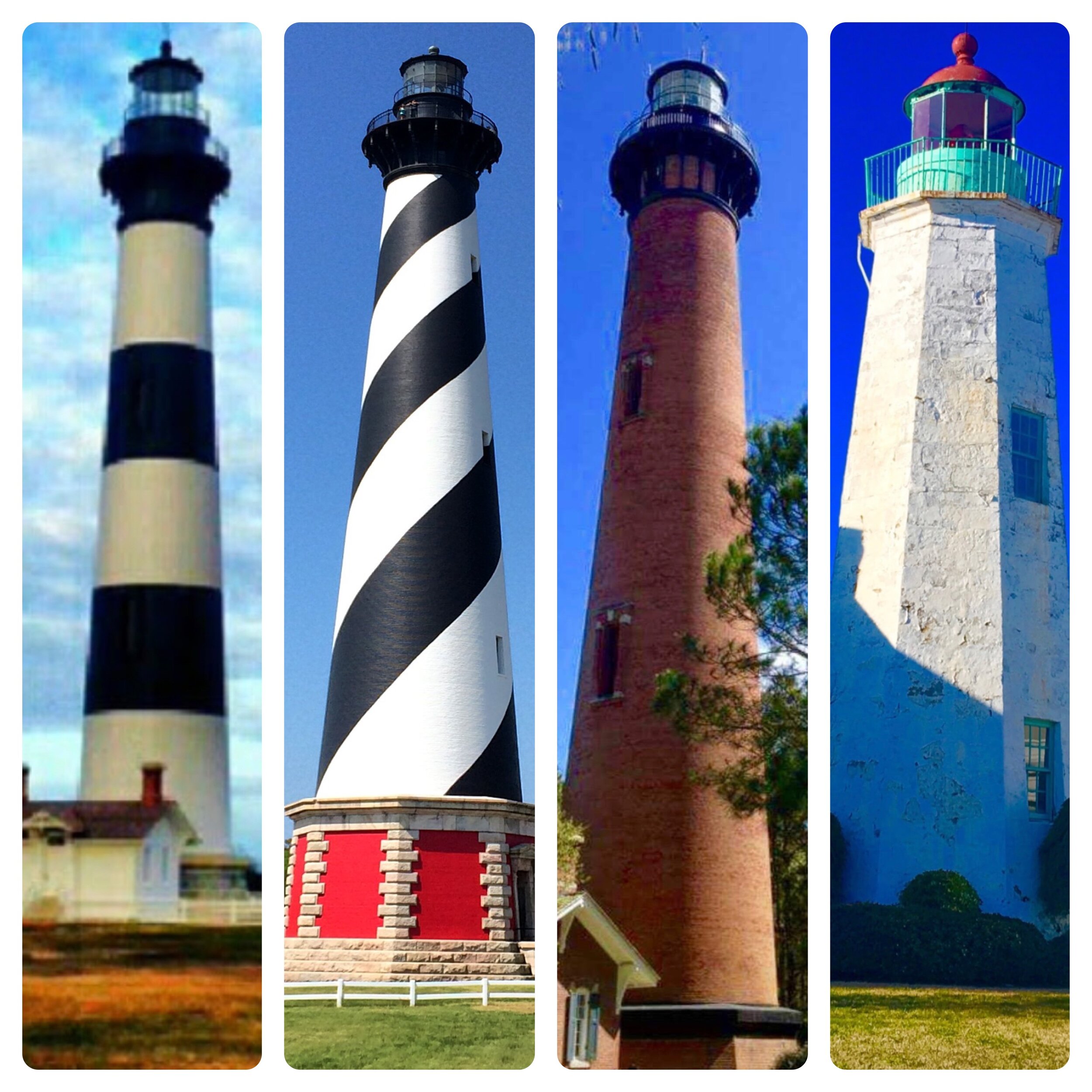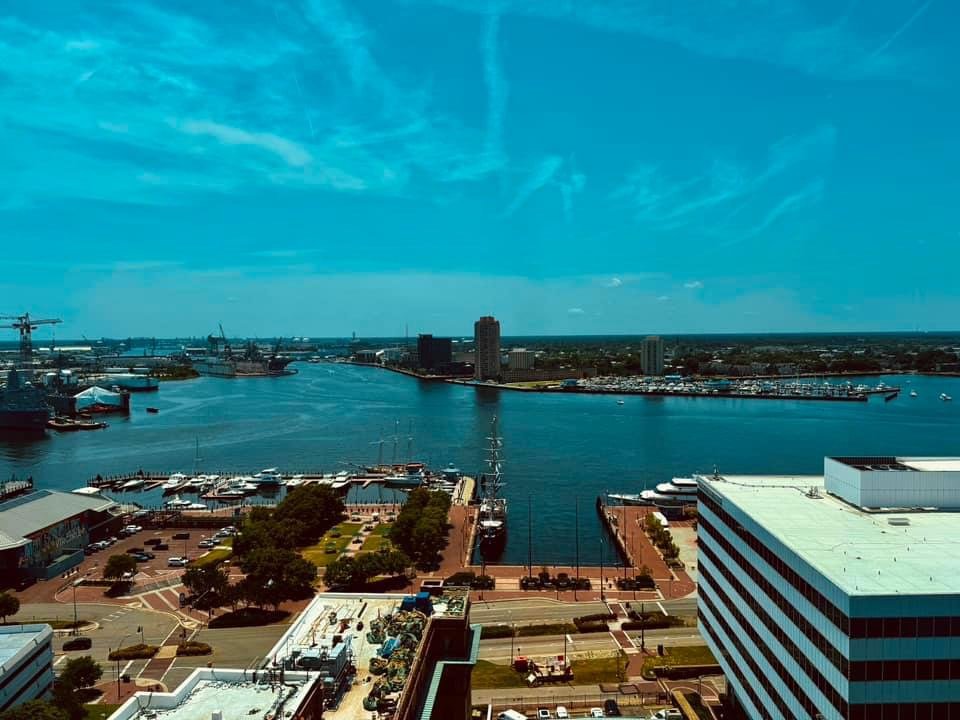A Coastal Beacon Of Light

A Coastal Beacon Of Light
Lisa’s Point of View has had an affinity of visiting lighthouses for years. Living on the East coast, I have had the opportunity to visit several lighthouses in coastal SE Virginia and North Carolina’s Outer Banks over the years. Lighthouses are navigational aids for boats and warn of dangerous areas. Each of the lighthouses I have visited have such a fascinating history on how they were built and when automation occurred. Some have been rebuilt and some have been moved from their original locations they were built on.
I have had the opportunity to visit and climb the Cape Hatteras Lighthouse several times over the years. The Cape Hatteras Lighthouse is located on the southern end of the Cape Hatteras National Seashore. The waters off the coastal region is known as the Graveyard of the Atlantic. With the treacherous waters to navigate, there have been hundreds of ship wrecks offshore.
There is intriguing history on the lighthouse. It was originally built and lit in 1803. It was 90 feet tall and made of sandstone. It was difficult to see so in 1863 another 60 feet was added to the lighthouse. A new lighthouse was built in 1870 and later given the well known black and white striping. There are interesting statistics on the lighthouse. “The lighthouse is a conical brick structure rising from an octagon-shaped brick and granite base and topped with an iron and glass lantern. It is the tallest brick lighthouse in the United States and measures 198.49 feet from the bottom of the foundation to the top of the pinnacle of the tower. This height was needed to extend the range of the light-beam from the tower’s low-lying beach site. The tower’s sturdy construction includes exterior and interior brick walls with interstitial walls resembling the spokes of a wheel. There are 269 steps from the ground to the lens room of the lighthouse.” Via https://www.nps.gov/caha/planyourvisit/chls.htm .
In 1999 the lighthouse was moved 2900 feet to 1500 feet from the sea, its original distance from the sea.
The Currituck Beach Lighthouse in northern Corolla on the northern Outer Banks of North Carolina is in a beautiful pristine setting.
In addition to climbing the 220 steps to the top of the lighthouse, afterwards there are quaint shops, the historic schoolhouse along with the Whalehead Club's museum and expansive grounds to stroll. The sweeping views from the Currituck Sound to the Atlantic Ocean makes it a "must visit" destination on your trip to the Outer Banks. When I visited a few years ago, I had the opportunity to climb the lighthouse to the top. The views of the Atlantic Ocean to the Currituck Sound were incredible on that crystal clear day.
A little history from the website: "The Currituck Beach Lighthouse is known as a first order lighthouse, which means it has the largest of seven Fresnel lens sizes. With a 20-second flash cycle (on for 3 seconds, off for 17 seconds), the light can be seen for 18 nautical miles. The distinctive sequence enables the lighthouse not only to warn mariners but also to help identify their locations. Like the other lighthouses on North Carolina’s Outer Banks, this one still serves as an aid to navigation. The beacon comes on automatically every evening at dusk and ceases at dawn."
More history and information can be found on their website: https://obcinc.org/visit-our-sites/currituck-beach-lighthouse/
The Bodie Island Lighthouse constructed in 1872 is on the northern end of Cape Hatteras National Seashore on the Outer Banks of North Carolina. It is actually the 3rd lighthouse structure to stand on the Bodie Island site over the years. The current structure stands 150 feet high. It is one of seven coastal lighthouses in North Carolina. It has a very unique setting unlike other lighthouses as it sits along marsh land and tall trees. Yet it is such a serene view among the landscape.
From the website are interesting facts on why the lighthouse was built: “In 1837, the federal government sent Lieutenant Napoleon L. Coste of the revenue cutter Campbell to examine the coastline for potential lighthouse sites that would supplement the existing one at Cape Hatteras. Coste determined that southbound ships were in great need of a beacon on or near Bodie Island by which they could fix their position for navigating the dangerous cape. He punctuated his recommendation with the statement that "more vessels are lost there than on any other part of our coast."
You can learn more on the history of Bodie Island Lighthouse on the website: https://www.nps.gov/caha/planyourvisit/bils.htm
I have a love of the history behind lighthouses. One of my "local" favorites in coastal SE Virginia is the Old Point Comfort Lighthouse on Fort Monroe in Hampton Virginia. This lighthouse was built in 1802. On a clear winter day in 2015, I was able to capture the beauty of this lighthouse and other buildings throughout Fort Monroe decorated for the holidays.
As it is located over looking the waterfront at Fort Monroe, it is such a beautiful site when walking along the seawall at Fort Monroe. The lighthouse captures the views of where the James River, Nansemond River, and Elizabeth Rivers converge. Fascinating history on the lighthouse: “During the War of 1812, the lighthouse became an observation post when it temporarily fell into British hands. In 1855, Congress appropriated $6,000 to build a fog bell tower for inclement weather. Measuring 40 inches around and three feet high, the bronze bell could be heard up to three miles away. Soon thereafter a beacon light was added to the station to guide ships docking at Fort Monroe.” Via: https://fortmonroe.org/explore/historic-sites/ .
"It is the second oldest lighthouse on the Chesapeake Bay." via the National Park Service website. Today it is operated by the U.S. Coast Guard as an aid for navigation. Take a little time to learn more about the Old Point Comfort Lighthouse at: https://www.nps.gov/fomr/learn/historyculture/index.htm
There are many more lighthouses in Virginia and North Carolina for me to explore and visit. It can make for a great educational experience for young and old alike. They help give a deep appreciation for their purpose to help guide the ships safely to port. The lighthouses we have to explore are most definitely one of Lisa’s Favorite Places. I hope you have enjoyed a few of my photos of the lighthouses from Lisa’s Point of View.



















